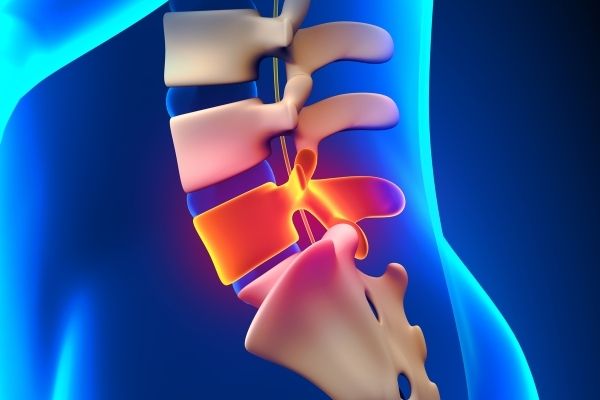Slip Disc Bulge Treatment: L4, L5 slipped disc occurs when the disc between the lower bones of the spine slips, putting pressure on the nerves and causing sciatica pain. It is treated with physiotherapy, pain relievers, and in severe cases, surgery.
A slipped or herniated disc, particularly at the L4, L5 level of the spine, is a common condition that can lead to significant discomfort and impact daily activities. The condition occurs when the soft cushion of tissue between the bones in your spine (vertebrae) slips out of place, putting pressure on nearby nerves. This can result in intense pain, known as sciatica, which typically radiates from the lower back down through the legs.
Causes and Symptoms
The L4, L5 vertebrae are located in the lower back, a region that bears much of the body’s weight and is involved in many movements. Repeated strain, improper lifting, or sudden trauma can cause the disc in this area to herniate or bulge. Symptoms may include sharp or burning pain, numbness, tingling in the legs or feet, and muscle weakness. In severe cases, it can also lead to difficulties in bladder and bowel control.
Treatment Options
- Conservative Treatment:
- Rest and Pain Relief: Initial treatment often involves rest and pain management using over-the-counter painkillers, anti-inflammatory drugs, and muscle relaxants. Applying heat or cold packs can also help relieve discomfort.
- Physiotherapy: Physical therapy is a cornerstone of treatment for slipped discs. A physiotherapist can guide you through exercises to strengthen the muscles around the spine, improve flexibility, and reduce the pressure on the affected nerve. Core strengthening exercises are particularly beneficial for providing better support to the lower back.
- Lifestyle Modifications: Adopting proper posture, engaging in regular low-impact exercises like swimming or walking, and maintaining a healthy weight are critical in managing symptoms and preventing recurrence.
- Advanced Treatments:
- Epidural Injections: For severe pain that doesn’t respond to oral medications, corticosteroid injections directly into the epidural space around the spinal nerves can reduce inflammation and provide temporary relief.
- Surgical Options: Surgery is usually considered when conservative treatments fail to relieve symptoms or when the disc is severely herniated, causing significant nerve compression. The most common surgical procedures include:
- Microdiscectomy: This minimally invasive surgery involves removing the portion of the disc that is pressing on the nerve.
- Laminectomy: In some cases, removing a portion of the vertebra (lamina) may be necessary to relieve pressure on the nerves.
- Spinal Fusion: In severe cases, where the disc is completely degenerated, fusing the affected vertebrae might be recommended to stabilize the spine.
Prevention and Long-Term Management
Preventing further disc issues and managing an existing condition requires ongoing attention to spinal health:
- Ergonomics: Use ergonomic furniture and practice proper body mechanics when lifting heavy objects.
- Exercise Regularly: Engage in exercises that strengthen the core and back muscles to provide better spinal support.
- Weight Management: Maintaining a healthy weight reduces the strain on your lower back.
- Stay Active: Regular movement helps keep the spine flexible and reduces the risk of disc problems.
Managing a slipped disc, particularly at the L4, L5 level, requires a multifaceted approach involving rest, pain management, physiotherapy, and, in some cases, surgical intervention. Early diagnosis and treatment are crucial in preventing long-term complications and improving the quality of life for those affected by this painful condition.

